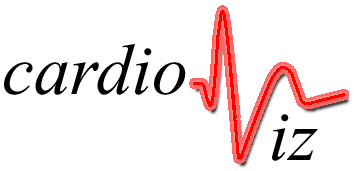

MOTD | Meetings | Background | Proposal | Team | Download | Links
The revised project proposal follows the original very closely. However, in the revised proposal, we outline more concise goals and specifications. Once we have a working project, we will be open to modifying and adding features as well as other enhancements to the project.
| Team | Ryan Roth, Damien Suttle, Nicholas Yang; our TA is June Ahn |
| Client | John Stein |
| School | Brown University |
| Compatibility | We are aiming to be platform-independent with a focus on compatibility with the web. |
| Software | Director and Java |
| Project | The final product
will be a teaching aid, rather than a stand-alone tutorial. It will
consist of graphs that display the relationship between different elements
of the cardiovascular system, such as cardiac output, blood pressure, total
peripheral resistance, mean circulatory filling pressure, and stroke volume.
Accompanying the graphs will be animated illustrations, showing the heart,
arteries, veins, and movement of blood flow. The user will be able to
alter certain influencing factors in the system and interactively see the
corresponding changes in the graphs and illustrations. A flowchart
that visualizes the sequence of events will also be available. As an
add-on, the project will include case-scenarios, where the user can predict
what would happen in a given situation and then see what would actually
happen. Scenarios might include suffering a gunshot wound, having a
heart attack, heart stoppage, blood loss, or a hemorrhage. Once the
basic infrastructure is complete, we will look into adding information and
facts that can help the user learn and also serve as a handy reference. As an example, picture an animation of a heart pumping blood from veins into arteries. Mathematically, blood pressure is the product of cardiac output and total peripheral resistance. Thus, by increasing resistance, the arteries in the animation will start to bulge due to an increase in pressure while the veins shrink to show a decrease in pressure. A graph might show cardiac output versus right atrial pressure and actively update the plots for the cardiac and vascular functions. At the click of a button, a flowchart depicting the events that have happened will pop up. Alternatively, the user may want to decrease resistance or try varying the pressure in the right atrium. The respiratory project mentioned in Professor Stein's original proposal will be attempted only after the cardiovascular portion has been completed. Hopefully, the illustrations, graphs, concepts, and methods used in the cardiovascular project can be imported and reused. |
| Difficulties | The hardest part of this project will be making convincing animations. After that, making the software effective in a classroom becomes the next concern. If time permits, the project will be modified to act more as a tutor rather than just a teaching aid. It will contain more information than just charts, graphs, and animations and will be targeted for use by students rather than teachers. |
This is the original project proposal submitted by Professor Stein.
| Name | John Stein |
| School | Brown University |
| Subject | Physiology |
| Textbooks | Medical Physiology by Boron & Boulpaep |
| Project | Many times I will
present material in several different formats to improve
comprehension. A good example of difficult topics that that are taught this
way
are cardiovascular and respiratory physiology. Cardiovascular physiology
involves following a number of physiological measures (blood pressure, heart
rate, stroke volume, filling pressure, peripheral resistance) as the system
adapts to various situations. Alterations in these factors can be
demonstrated
with flow charts, plotted on axes, or depicted in illustrations. The goal of
this project is to present all three simultaneously to appeal to different
approaches to learning.
Cardiovascular |
Questions, comments, or suggestions? Email